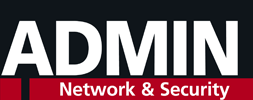With the resurgence of sophisticated macro virus attacks, new countermeasures are in order. We offer a few recommendations.
The focus in SQL Server 2016 is on mobility, cloud usage, and speed, with improvements to in-memory processing and security.
Attacks on Microsoft Office files are increasing. A multilayered approach is your best protection against this malware.
A free TLS certificate from Let's Encrypt means you can add encryption to your network for no cost, so you don't have any more excuses for failing to encrypt.
HTTPS protects a connection from both tapping and manipulation, but only if a man in the middle hasn't already infiltrated the Internet connection. We highlight the weaknesses in HTTPS and demonstrate how to protect your client and server.
Google Authenticator provides one-time passwords to smartphone owners for multifactor authentication, or you can integrate it into other applications, such as blogs.
Redmond is set to launch the next-generation Windows Server 2016. Microsoft promises to make administration more secure, which is a good enough reason to take a closer look at the new Privileged Access Management feature.
Classic security safeguards, like antivirus and firewall products, are imperative for system protection. To search proactively for network intruders, as well, Microsoft offers Advanced Threat Analytics – a tool that will help even less experienced admins.
With each version of Windows, Microsoft has expanded the built-in security functions. Windows 10 includes a number of new and interesting security features.
Although attacks on computers are numerous and varied, they are predominantly based on the same techniques. Microsoft closes these vulnerabilities on Windows computers using the Enhanced Mitigation Experience Toolkit (EMET).












